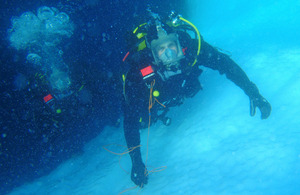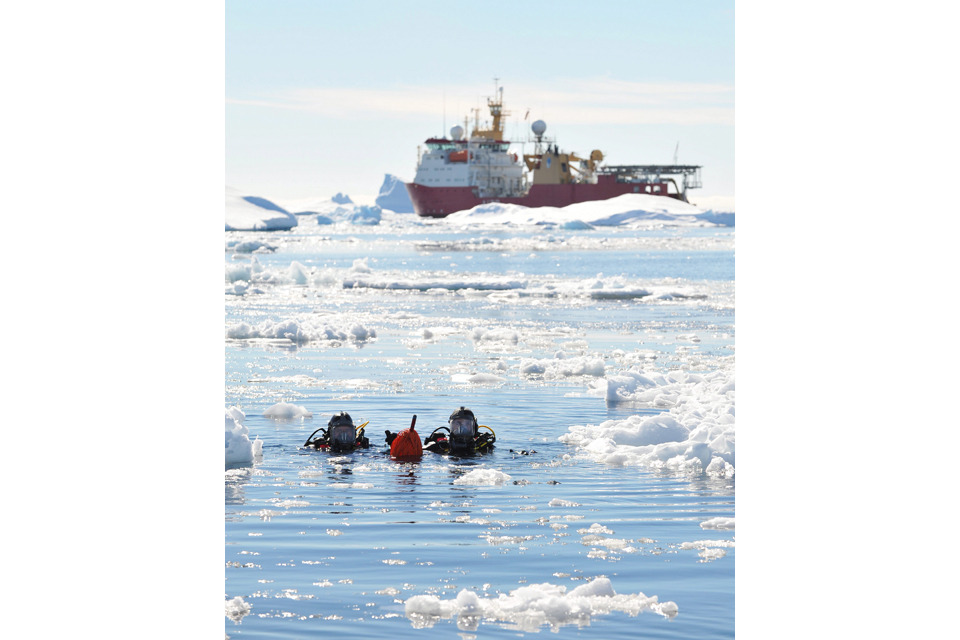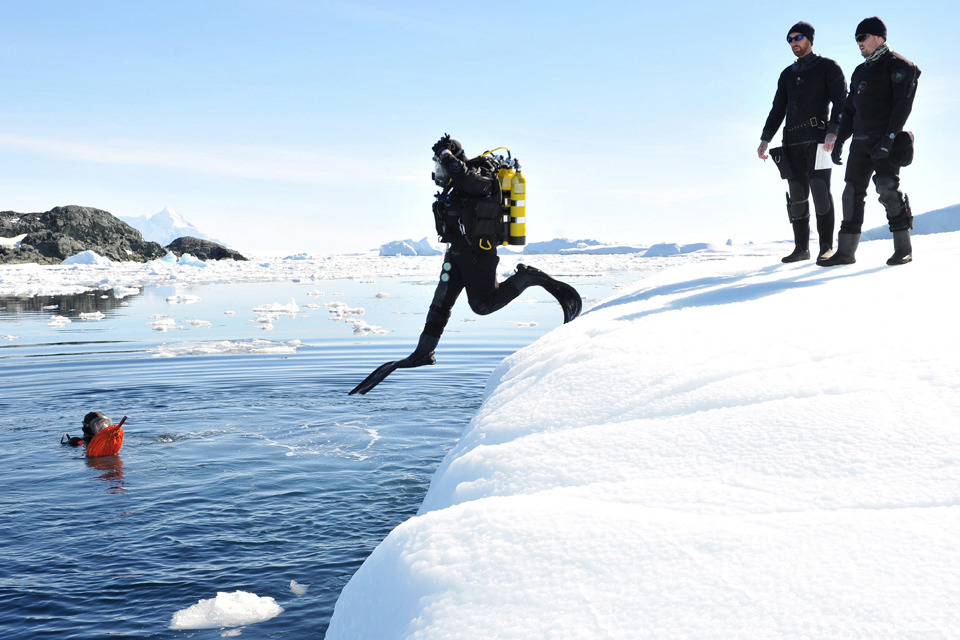Royal Navy divers brave icy waters on environmental mission
Divers from Royal Navy ice patrol ship HMS Protector have been exploring beneath the waves of the Antarctic to ensure stringent environmental guidelines are being followed in the region.

Leading Diver Hayes, followed by Able Diver Dewhirst, diving off an iceberg near Detaille Island [Picture: Leading Airman (Photographer) Arron Hoare, Crown copyright]
In the process, the diving team on board HMS Protector have been busy capturing rare underwater footage of the Antarctic.
Providing essential imagery of sights rarely seen by human eyes, the 4 Royal Navy divers braved the chilling temperatures to ensure environmental guidelines are being followed in the region - particularly in the case of the sunken Argentine research vessel the MV Bahia Paraiso.
When she ran aground in 1989 the ship spilled 645,000 litres of diesel and caused one of the worst marine environmental emergencies in Antarctica to date. However, a recent Argentine and Dutch team carefully removed all traces of fuel, with HMS Protector’s dive team tasked to ensure there was no further leakage.

Leading Diver Lindsay and Able Diver Courtney diving near Detaille Island, with HMS Protector in the background [Picture: Leading Airman (Photographer) Arron Hoare, Crown copyright]
Diving on the hull, and equipped with an underwater camera, the team were able to confirm that the diesel flow had ceased and also identified a rich ecosystem of hanging sponges and aquatic life.
Leading Diver Chris Hayes, the team leader, said:
Diving in Antarctica is inconceivably amazing, with diverse aquatic life and breathtaking sea bed topography. It is a real privilege to dive in the Antarctic; it certainly makes a change from diving in UK waters searching for unexploded Second World War ordnance or in the very warm waters of the Gulf.
The team also explored the dormant water-filled caldera of the Deception Island volcano - which is one of only two in the world - and surfaced to a watching audience of penguins intrigued by their strange-looking visitors.

Leading Diver Lindsay enters the water from an iceberg near Detaille Island [Picture: Leading Airman (Photographer) Arron Hoare, Crown copyright]
While this risk assessment included exiting safely if there was any sign of volcanic activity, the divers were also warned of the dangers of killer whales and leopard seals as they explored icebergs on the peninsula.
After confirming the icebergs were grounded rather than floating, the dive team jumped into the waters to examine the mass of ice underneath. The cold waters provide excellent visibility for this type of diving - around 15 metres or more, with the sea bed around the icebergs littered with whale bones, starfish and an array of rare fauna and flora.

Able Diver Dewhirst and Leading Diver Hayes in the icy waters of the Antarctic [Picture: Leading Airman (Photographer) Arron Hoare, Crown copyright]
HMS Protector, which is based in Portsmouth, is a 5,000-tonne ice patrol ship that is deployed on operations 330 days of the year. Her mission is to provide a UK sovereign presence in the British Antarctic Territory, South Georgia and the South Sandwich Islands and their surrounding maritime areas.
This includes underpinning their security and good governance, meeting the UK treaty obligations and exercising rights under the Antarctic treaty through inspections, hydrographical charting and support to scientific research.